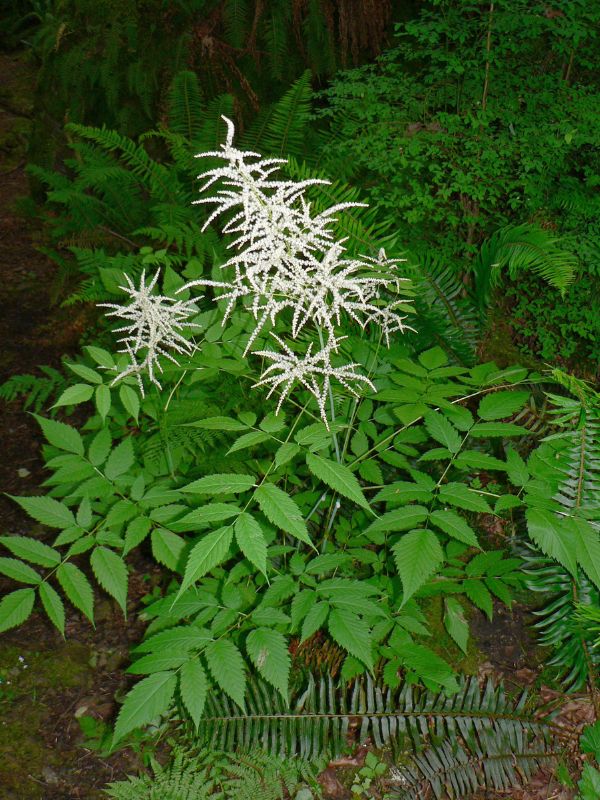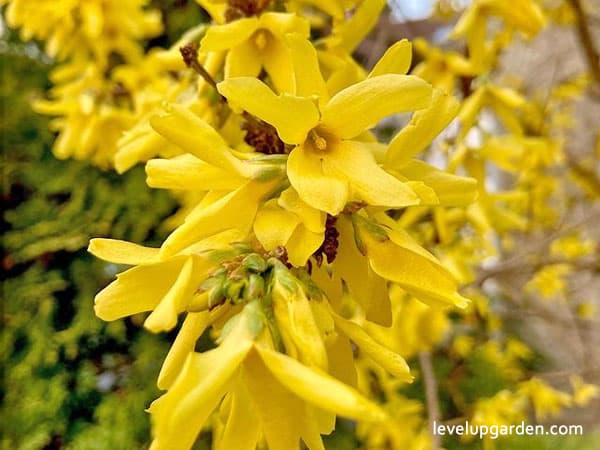Royal Empress Tree (Paulownia tomentosa), commonly known as the princess tree, empress tree, or fox tree, is a deciduous, fast-growing, deciduous broad-leaved tree of the Paulownaceae family native to central and western China. The tree is named after Princess Anna Parouna of Russia, and the species name tomentosa means hairy in Latin. This shade tree grows rapidly, 15 feet per year, reaching a mature height of 50 feet and width of 30 feet in just 10 years. It is considered one of the fastest growing trees in the world.
The Royal Empress Tree is a beautiful, fragrant, and incredibly fast growing tree. Its flowers are a jewel-like purple color and its shape is unusual and unique. The heart-shaped leaves can grow to a staggering width of 30 inches.

It can adapt to a variety of soils, including less fertile and more acidic soils, but prefers well-drained, moist, deep sandy loam soils. It can tolerate light shade, but prefers full sun. It is not at all sensitive to air pollution or coastal environments and easily self-sows. The canopy creates dense shade, making it difficult to grow plants under it, and it competes with native plants for nutrients and water.
I. Plant Profile – An Overview of the plant
| Common names | Royal Empress Tree, Princess Tree, Foxglove Tree, Empress Tree, Royal Empress Tree, Paulownia imperialis |
| Botanical Name | Paulownia tomentosa |
| Genus | Paulownia |
| Species | tomentosa |
| Family | Paulowniaceae |
| Plant Type | Trees |
| Exposure | Full Sun |
| Water Needs | Low, Average |
| Maintenance | Average |
| Soil Type | Chalk, Clay, Loam, Sand |
| Soil pH | Acid, Alkaline, Neutral |
| Soil Drainage | Well-Drained |
| Mature Height | 40-50 ft. |
| Mature Width | 30-40 ft. |
| Growth Rate | Fast |

II. Appearance
In spring, the Royal Empress Tree blooms lavender-colored flowers throughout its crown. But the striking flowers are not the only eye-catching feature of this medium-sized ornamental tree. The leaves are deciduous and can be up to 12 cm wide. Its scientific name, Paulownia tomentosa, is a reference to the Russian Anna Paulowna, which refers to the plant’s regal beauty.
It grows 10 to 25 meter tall, with heart-shaped, 5 lobed leaves, 15 to 40 cm in diameter, growing in pairs on stems. Young leaves may have three in a whorl and are much larger than mature leaves. The leaves can sometimes be mistaken for those of the Abragillus.
In early spring, large and purplish-blue flowers bloom before the leaves are fully developed. The 10 to 30 cm long inflorescence has a tubular purple corolla 4 to 6 cm long, similar to digitalis flowers. The fruit is a 3 to 4 cm long, dry, ovoid capsule containing numerous small seeds.
The seeds are winged and are dispersed by wind or water. Its flowers are produced only on mature trees. But not on trees that have dropped pollen.
It is resistant to pollution and adapts to a wide variety of soils. It can also grow through small cracks in pavement and walls. Paulownia can withstand wildfires because its roots can regenerate new stems that grow very quickly.
The leaves are large and velvety soft, much like the Chinese catalpa. Its Flowers bloom on second year trees and are gorgeous, light purple-pink with a vanilla-like fragrance. In the fall, the woody brown seed coat opens to reveal winged seeds.
It has fruits that are 1″ to 1.5″ long, and are woody oval lobed capsules . This contains thousands of tiny winged seeds. The immature capsules are sticky green and turn brown in the fall.
Its flowers are fragrant, edible 1.5 to 2 inch long, funnel-shaped or tubular flowers in large, upright clusters, 14 inches long, in spring. Pale purple to pink with darker spots and yellow stripes, vanilla fragrance. These flowers resemble foxgloves.

III. Growing and Care Conditions
Royal Empress Tree is a large, fast-growing shade tree that produces gorgeous lavender-pink flowers on bare branches in spring. It thrives in most conditions, tolerating urban environments, pollution, and poor soil.
The foliage is large and can be strongly pruned to develop into a very large size for a dramatic garden effect. It is hardy and fast growing, making it suitable for large sites and gardens.
Planting
The Royal Empress Tree is virtually unbreakable once established, but does require some care in the early stages of growth. It does best in full sun and well-drained soil. However, plant away from structures.
Plant after frost or when surrounding plants have begun to sprout. Mixing in potting soil or soil conditioner will help, especially when planting in clay or poor soil. Make a hole twice as wide and as deep as the rootball, place the tree in the hole, and spread the roots evenly. Water to moisten and settle the soil, keep the soil moist, and spread enough mulch to control weeds and grass.
Light
Choose a sunny location, but it will also grow in light shade. Royal Empress Tree requires no special care, is disease resistant, and is rarely attacked by pests. In warmer areas, little pruning is needed except to keep the trunk tall and clean so that branches are off the ground for vehicle traffic.
Watering
Water when the top 2 to 3 inches of soil is dry. As a general rule, water only after the soil around the tree has dried. If the tree is wet upon arrival, skip the first watering for two days.

Fertilizer
Empress trees prefer organic fertilizers with a high nitrogen content. The first of the three numbers in the organic fertilizer is greater than the other numbers, indicating a high nitrogen content (e.g., 20-10-10). Fertilizer can be applied twice a month during the growing season. Stop fertilizing before the tree goes dormant and additional fertilizer is applied after the first year.
Soil Requirements
Royal Empress Tree can grow in most types of soil. You can even grow this tree in low fertile and highly acidic soil. Though, it prefers moist, deep, sandy-loam, and well drained soil.
Temperature
Empress trees are very hardy. It can withstand temperatures as low as -10 degrees Fahrenheit and as high as 120 degrees Fahrenheit, but these temperatures are deceptive. The tree is actually much less tolerant than these numbers represent. The Empress Tree’s roots are tougher than its stems. The flowers and leaves will die at 0 degrees Fahrenheit, and the entire trunk will die at -10 degrees Fahrenheit if it is cold for even a short period of time.
Pruning
Allow the tree to grow for one full year. If the tree did not grow more than 4 feet before winter dormancy, it is recommended to trim it down to just above ground level in early spring. This may seem odd, but it will produce a bunch of little shoots.
Select the best shoot from that bunch and pinch off the others. This way, all the nutrients are concentrated on that one tree, making it very straight and beautiful.
Pests and Diseases
Pests and diseases are not a concern. One of the reasons these trees are invasive is that they are resilient and have little to worry about growing.
However, there are some threats to watch out for. For example, if you value the flowers of these trees, you want to protect them from winter winds. Since the buds emerge in early spring, a late winter storm without protection could cause the buds to freeze.
IV. Uses
It is cultivated as an ornamental tree in parks and gardens. It functions ecologically as a pioneer plant because of its high tolerance and flexibility. Its nitrogen-rich leaves provide forage and its roots prevent soil erosion. Eventually, paulownia trees are replaced by taller trees, and paulownia trees no longer grow in their shade.
Taking advantage of the large size of young paulownia trees, they drop their pollen and vigorously produce new shoots every year, producing giant leaves that can grow up to 60 cm in length. This is popular with modern gardeners who use large-leafed, “architectural” plants.
P. tomentosa has also been proposed as a plant for carbon capture projects due to its ability to fix C4 carbon, its highly efficient photosynthesis, its large leaves that absorb pollutants easily, and its wood and aesthetic qualities. In short, it is a really good plant for urban settings.

V. Why should you buy this plant
Royal Empress is a tree that can be enjoyed all year round. In the winter, the pea-sized furry buds on its branches wait to bloom into large flowers. In spring, the purple flowers bloom in profusion. They have a wonderful fragrance, a cross between gardenia and jasmine.
Royal Empress is probably the fastest growing shade tree. The flowers are very beautiful and the foliage is large and attractive. It grows into a large tree in any sunny, warm state and provides shade and a cool place for children’s playgrounds, barbecues, and family gatherings. It is a large spreading tree, so it should be planted away from buildings and power lines.
Its size and rate of growth also make it a great specimen tree for large properties or as a privacy screen that grows quickly. When pruned annually, it produces very large, magnificent foliage that makes a wonderful display among other shrubs or behind flowering trees. When grown this way, the foliage can be over two feet long, giving the garden a tropical look.
In spring, the lavender flowers bloom and give off a sweet fragrance for several weeks. This sweet fragrance will spread throughout your entire garden. The flowers can also be cut off and placed inside the house to make a natural air freshener.
Unlike other fast-growing plants, the Royal Empress Tree (paulownia) does not root and erode the entire garden. This tree has proven to be very effective in preventing erosion and reducing the loss of irreplaceable topsoil.
Did you know that without mature shade trees around your home, your utility bills can be about 25% higher? Mature trees that protect older homes typically reduce energy bills by blocking the sun’s heat and preventing wind. Also known as the Royal Princess Tree, it creates shade faster than any other tree. Then in the fall, it drops its large leaves and allows warm sunlight to pass through when it is needed.
In the summer, this tree forms a dense canopy that can significantly reduce your electric bill. The tropical-looking leaves are large, measuring about 1.5 meters across. Plus, larger leaves mean fewer branches, which means more sunlight and natural heating in the winter.
Best of all, the Royal Empress Tree is hassle-free. It grows almost anywhere from Mexico to Canada and is free of insects and diseases. It is also drought tolerant and will grow in almost any soil, even toxic soils. It is a hardwood and can live to be an old tree. Your Empress tree is a workhorse, reducing household costs, and its large leaves act as a giant air filter, removing pollution from the air at an alarming rate.

VI. FAQs
How fast does the Royal Empress Tree grow?
The Royal Empress Tree is one of the fastest growing of any tree species, growing up to 15 feet tall in one year. As soon as the tree takes root, it spreads its roots and branches, reaching a height of 40 to 50 feet and a branch spread that is comparable to that of the tree. Amazingly, this tree species can reach maturity in less than 10 years. However, because of its rapid growth, it can be problematic in some areas.
Is the Royal Empress Tree invasive?
Royal Empress Tree is an invasive species that aggressively disperses seeds and sends out suckers. Please check with your local agricultural extension office to see if the tree is invasive or illegal to plant in your state, county, or municipality.







